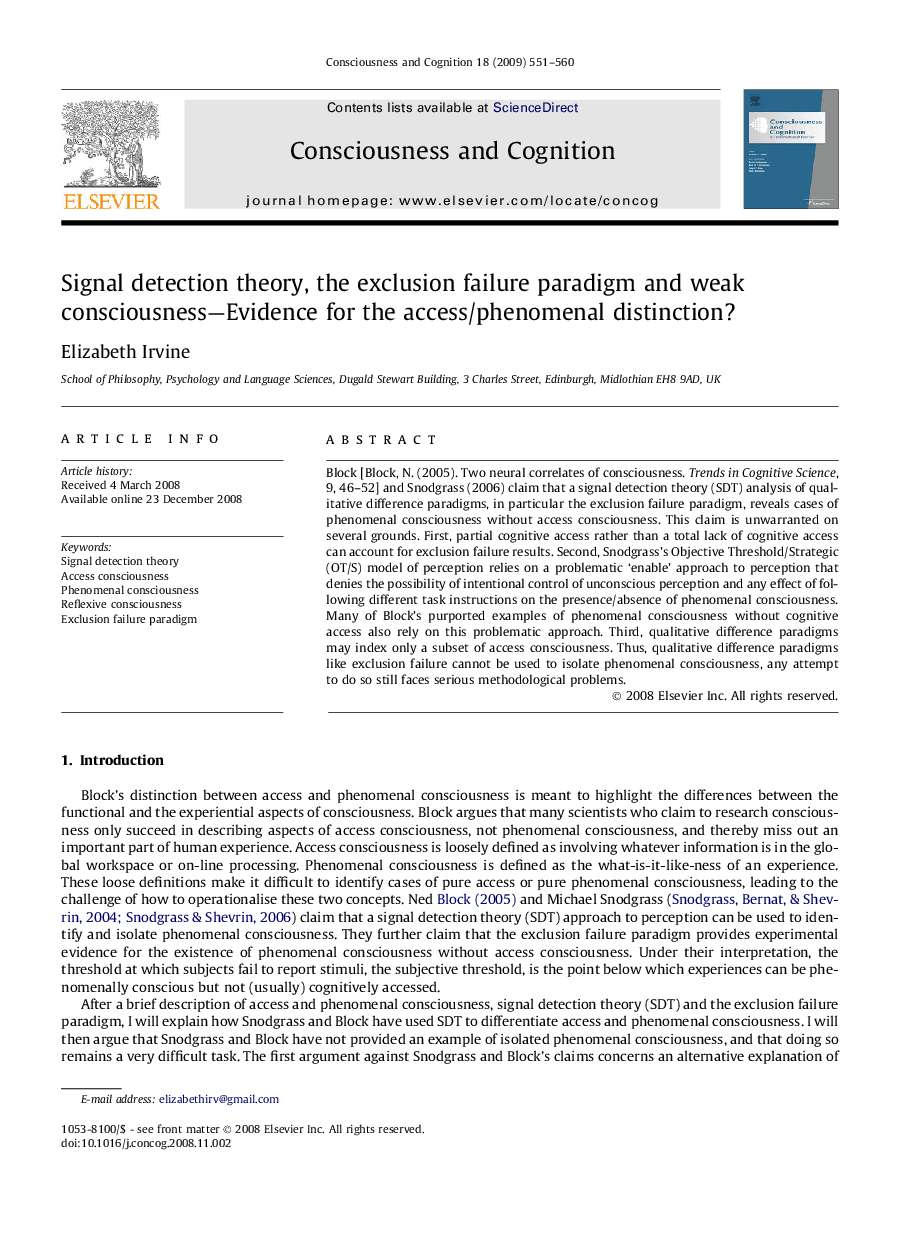| کد مقاله | کد نشریه | سال انتشار | مقاله انگلیسی | نسخه تمام متن |
|---|---|---|---|---|
| 927761 | 922275 | 2009 | 10 صفحه PDF | دانلود رایگان |

Block [Block, N. (2005). Two neural correlates of consciousness. Trends in Cognitive Science, 9, 46–52] and Snodgrass (2006) claim that a signal detection theory (SDT) analysis of qualitative difference paradigms, in particular the exclusion failure paradigm, reveals cases of phenomenal consciousness without access consciousness. This claim is unwarranted on several grounds. First, partial cognitive access rather than a total lack of cognitive access can account for exclusion failure results. Second, Snodgrass’s Objective Threshold/Strategic (OT/S) model of perception relies on a problematic ‘enable’ approach to perception that denies the possibility of intentional control of unconscious perception and any effect of following different task instructions on the presence/absence of phenomenal consciousness. Many of Block’s purported examples of phenomenal consciousness without cognitive access also rely on this problematic approach. Third, qualitative difference paradigms may index only a subset of access consciousness. Thus, qualitative difference paradigms like exclusion failure cannot be used to isolate phenomenal consciousness, any attempt to do so still faces serious methodological problems.
Journal: Consciousness and Cognition - Volume 18, Issue 2, June 2009, Pages 551–560